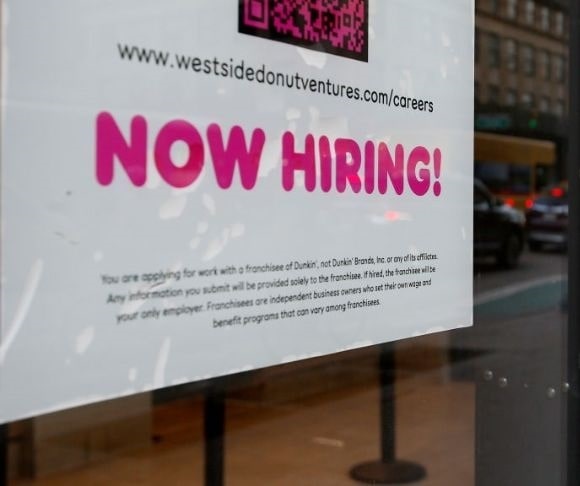The newest talk on Wall Street is that the United States economy could endure a so-called slowcession, meaning a recession in which growth grinds to a halt and unemployment rises. While Liberty Nation has discussed the likelihood of the US returning to the Obama economy, some market analysts think that the nation could emulate what occurred in the early 1990s: monetary policy tightening followed by a brief downturn. Although this period often does not dominate economic history discussions, it was a notable time for the country leading up to the dot-com boom.
Back to the ‘90s Recession
 By now, many Americans have become acquainted with the inflation crisis of the 1970s and 1980s, which forced the Federal Reserve to lift the benchmark fed funds rate (FFR) to double-digit territory. After lowering the consumer price index (CPI) from a peak of 13.55% in 1980 to just 1.9% in 1986, the annual inflation rate started climbing again: 3.66% in 1987, 4.08% in 1988, 4.83% in 1989, and 5.4% in 1990. This is the same trend that some financial experts are warning could happen in the coming years.
By now, many Americans have become acquainted with the inflation crisis of the 1970s and 1980s, which forced the Federal Reserve to lift the benchmark fed funds rate (FFR) to double-digit territory. After lowering the consumer price index (CPI) from a peak of 13.55% in 1980 to just 1.9% in 1986, the annual inflation rate started climbing again: 3.66% in 1987, 4.08% in 1988, 4.83% in 1989, and 5.4% in 1990. This is the same trend that some financial experts are warning could happen in the coming years.
The Eccles Building was forced to act. Under the new leadership of Alan Greenspan, the central bank started raising interest rates to curb the inflation threat, effectively emulating his predecessor, Paul Volcker. It was a successful endeavor as the CPI inched closer to the Fed’s 2% target rate in the following years and remained relatively stable until 2021.
However, this restrictive public policy pursuit came at a cost: recession. The annual GDP growth rate clocked in at 1.89% in 1990 and -0.11% in 1991, prompting the National Bureau of Economic Research (NBER) to declare a recession during the eight-month period of July 1990 and March 1991. Conditions picked up by 1992 as the US economy grew 3.52%, although the unemployment rate increased.
Of course, other factors contributed to the recession: the 1990 oil price shock from the Gulf War, the savings and loan crisis, overbuilding in the real estate market, and eroding business and consumer confidence. All these events, from the recession to rising joblessness, led to the upset 1992 victory for Bill Clinton. It was a compelling period, something that the Boston Fed Bank called “wholly unique.” But could history repeat itself in 2023?
The 2023 Recession
It has become almost universally accepted that the US economy will sink into a recession in 2023. Greenspan said it was the “most likely outcome,” former Fed Bank of New York President William Dudley stated that a downturn was “pretty likely,” and a broad array of banks, market analysts, and economists share the same opinion: A recession is in the cards this year. Indeed, the data suggest that it is forming. The S&P Global US Manufacturing Purchasing Managers’ Index (PMI) contracted again in December, consumer spending has slowed, the US housing market is in a recession, and the often-touted pandemic-era savings have been almost entirely exhausted.

(Photo by Leonardo Munoz/VIEWpress)
“Fitch expects the U.S. economy to enter genuine recession territory — albeit relatively mild by historical standards — in 2Q23. The projected recession is quite similar to that of 1990–1991, which followed similarly rapid Fed tightening in 1989–1990. Nevertheless, downside risks stem from nonfinancial debt-to-GDP ratios, which are much higher now than in the 1990s,” said Olu Sonola, head of US regional economics at Fitch Ratings, in a research note.
Should a recession strike the US and linger longer than what the experts anticipated, what then? This is the trouble because governments and central banks have typically employed fiscal stimulus and relief efforts to inject the economy with a dose of liquidity. The problem? Fiscal and monetary policymakers cannot afford to repeat the same policy blunders. Congress is already running trillion-dollar deficits and scratching its way back from the COVID-19 public health crisis, while the Fed is still attempting to scale back its extraordinary measures that were employed during the pandemic.
A Lost Decade?
In the 1990s, Japan suffered from economic stagnation, known as The Lost Decade. The Bank of Japan (BoJ) had essentially caused a myriad of problems, from an overheated real estate market to enormous asset speculation. The institution then tried to rectify the situation with higher interest rates, but this resulted in stagnating growth, the rise of zombie companies, and a market crash. As Liberty Nation noted in the early days of COVID, the US could embark upon a Lost Decade of its own in the 2020s, thanks to too many corporations, consumers, and governments taking on too much debt, even during the bullish times. The future of the US economy could be a dash of the 1990-1991 recession, a hint of what Tokyo endured, and a pinch of the 2008-2009 financial crisis. What do you get? The Obama economy.




